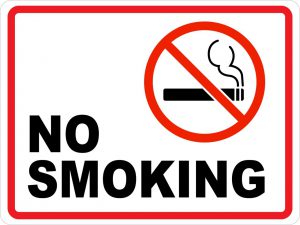Did you know 90% of Australian’s have at least one risk factor for Heart Disease. Some you can control and some you can’t. To learn more about risk factors click here.
One of the risk factors you CAN control…
SMOKING…
We’ve seen the pictures, we’ve read the stories and we’ve heard all the warnings. We know smoking is not good for our health, however, it’s an addiction and quitting can be a real emotional struggle and feel incredibly overwhelming. It’s important to note that it is NEVER too late to quit and every step taken towards quitting is still a win. Within a day of quitting smoking your body starts to repair itself. To see the staged process of how your body repairs itself visit the QUIT website.
Stopping smoking is one of the best ways to prevent heart disease. Smokers are almost twice as likely to have a heart attack compared with people who have never smoked.
Let’s look at the facts… How does smoking damage your heart?
- Smoking damages the lining of your arteries, leading to a build-up of fatty material (atheroma) which narrows the artery. This can cause angina, a heart attack or a stroke.
- The carbon monoxide in tobacco smoke reduces the amount of oxygen in your blood. This means your heart has to pump harder to supply the body with the oxygen it needs.
- The nicotine in cigarettes stimulates your body to produce adrenaline, which makes your heart beat faster and raises your blood pressure, making your heart work harder.
- Your blood is more likely to clot, which increases your risk of having a heart attack or stroke.
Second-hand Smoke
One of the other things to note is that your smoking habits can actually harm your loved ones and those around you. When non-smokers breathe in second-hand smoke, it can be dangerous to their own health.
Not only does exposure to second-hand tobacco smoke cause heart disease in non-smokers but also causes lower respiratory infections. Globally, an estimated 165 000 children die before the age of 5 of lower respiratory infections caused by second-hand smoke. Those who live on into adulthood continue to suffer the health consequences of second-hand smoke exposure.*
As mentioned earlier, smoking is an addiction and quitting can be overwhelming. It’s important to know there IS help and support available and you do not need to do it alone.
Talk to your doctor or health practitioner about helping you to Quit smoking. Visit the QUIT website or call Quitline (13 7848). There are many great tips and support on the QUIT website including cutting down to quit which may seem a less overwhelming way to stop. For tips on cutting down to quit click here.
 It’s important to note that when trying to quit, be kind to yourself. Read a book, go for a walk, get stuck into the gardening. Factor in some self-care and ensure you have some support.
It’s important to note that when trying to quit, be kind to yourself. Read a book, go for a walk, get stuck into the gardening. Factor in some self-care and ensure you have some support.
Professor Geoffrey Tofler, Chair of Preventative Cardiology, and one of the researchers funded by Heart Research Australia has been working on a novel approach to quitting smoking through the use of personalised video to create a teachable moment. To read more about his work click here.
*World Health Organization - World No Tobacco Day 2019 https://www.who.int/news-room/events/detail/2019/05/31/default-calendar/world-no-tobacco-day


